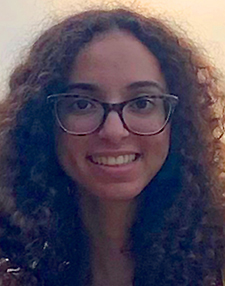Growing up in rural Texas, Ariel Alexander said treatment for her advanced idiopathic scoliosis as a teen caused unforeseen out-of-pocket expenses for her family.
“There was a Charleston brace (for scoliosis) that we could get, but we had to take all of those costs on ourselves because it wouldn’t be covered,” said Alexander, a pre-med junior at Carleton College in Northfield. Alexander said its those interactions at a young age with doctors and researchers that fueled her interest in health care.
Alexander hopes to attend medical school and work in pediatric oncology, and this summer she helped researchers in Alabama with a study looking at how financial barriers in health care affects children with cancer and their families toward the end of a child’s life. Alex’s Lemonade Stand Foundation gave her a $5,000 stipend to fund her internship.
The research
At the University of Alabama’s Institute for Cancer Outcomes and Survivorship, Alexander studied financial barriers referred to as “financial toxicity,” and how it impacts children with cancer and their families. Alexander worked with Dr. Emily Johnston, a faculty member at University of Alabama at Birmingham on that research.

“I feel like if we don’t really know what high quality care is, it’s hard to say who’s getting high quality care, and who is not,” Johnston said.
Alexander looked at interviews conducted with families who had lost someone in one of two states, Alabama and California. Those families often mentioned financial toxicity as a common thing affecting treatment.
Alexander looked at the interview transcripts and compiled the issues of financial toxicity into different themes, and Johnston developed 16 measures of quality end-of-life care for kids with cancer.
“There were quite a few families that had basic needs issues that were just exacerbated during their treatment, during end of life and bereavement, such as transportation from the hospital to the house, from the hospital to school,” Alexander said. “There were quite a few issues with transportation, housing, food, and then, of course, there were medical costs that parents talked about related to medication.”
Researchers said they want to develop mitigation measures to lessen those barriers.
“That involves both figuring out what went wrong and what the struggles were throughout their child’s end of life and during bereavement, and then also what went right and what was helpful,” Alexander said.
Focus on Black and Hispanic families
A main focus of the study, which makes it unique, was the emphasis on researching what was happening to Black and Hispanic families.
“We show time and time again that underrepresented minorities have worse health outcomes and it looks like in a lot of cases they probably have worse quality of end-(of)-life care,” Johnston said.
Alexander said among the participants in Alabama, about 50% were Black families, and around 50% of the California participants were Hispanic families. In total, there were 48 children in the sample and 55 bereaved parents.
“This issue, financial toxicity, at end of life for kids with cancer is an under-researched area, especially for underrepresented groups and families in rural areas,” she said. “To be able to increase the amount of research and knowledge in that area is incredibly important.”
Not only is researching the impacts of financial barriers on underrepresented communities important, but so is having people involved in the research that reflect those communities, Alexander said. She added that while the research didn’t compare the responses and challenges that Black and Hispanic families faced to white families, it serves as a starting point for increasing the voices of underrepresented communities.
Alexander, who is biracial and identifies as a Black woman, says having more providers who looked like her would have been beneficial when she was in and out of the hospital and doctor’s office as a kid. Having that voice reflected in research adds a needed perspective, too, she said.
“I know that times when there were medical professionals that were women of color, I just instinctively felt more comfortable. I felt more heard. I felt like I wasn’t as alone in those situations,” she said.


0 Commentaires